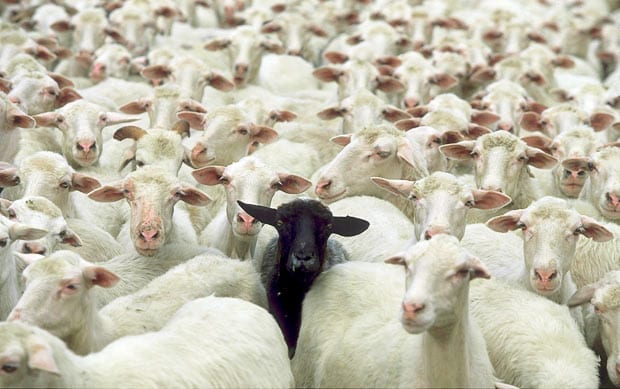 |
"After all, the wool of a black sheep is just as warm" - Ernest Lehman
Click here to link for picture |
In this essay, author Zara Neale Hurston writes on what constitutes her racial identity. Growing up in the little town of Eatonville, Florida, Hurston lived fearlessly amongst the whites, unafraid and colorblind to her surroundings; Making distinctions between skin color was something beyond her, a concept she had yet to grasp. Unfortunately, with time came the inevitable change of circumstances. Relocated to Jacksonville, she soon fell upon the realization that she was no longer “everyone’s Zora”, but just “a little colored girl”(115). This sudden exposure to the cruelties of the time transforms the once naive little girl into a strong but vulnerable black woman of the 1900s. In spite of the constant reminders that she is “the granddaughter of slaves,” Hurston’s take on race is quite profound. Through her experience as a colored woman, she is able to realize that every person, regardless of race, is up against the same wall. Looking inside each person would reveal the “jumble of small things priceless and worthless”(117). Her determination to enlighten her readers with this idea is the ultimate purpose of this essay. She writes to change her readers’ worlds and prove that a hierarchy of races is unjust. In helping to achieve this, she uses a vast array of rhetorical devices that enhance the clarity of her message. She connects an experience of when she felt the most colored to a dark rock overswept “among(st) the thousand white persons. But through it all remain(ing) [her]self”(116). The ambiguity of this statement allows for many interpretations; whether she felt drowned by the current, or fought strongly against it remains unknown. The strength of this ‘white sea’, however, is undeniable. The scatterings of figurative language on top of this help to create a lasting picture of the bravado of Hurston. The sufferings along with the joys is what allowed Hurston to brave the reality and help show her readers that white and black are no more different than they are similar. The fact that she is able to face her peers with such strong conviction of this is proof of the great credence of her words.


No comments:
Post a Comment